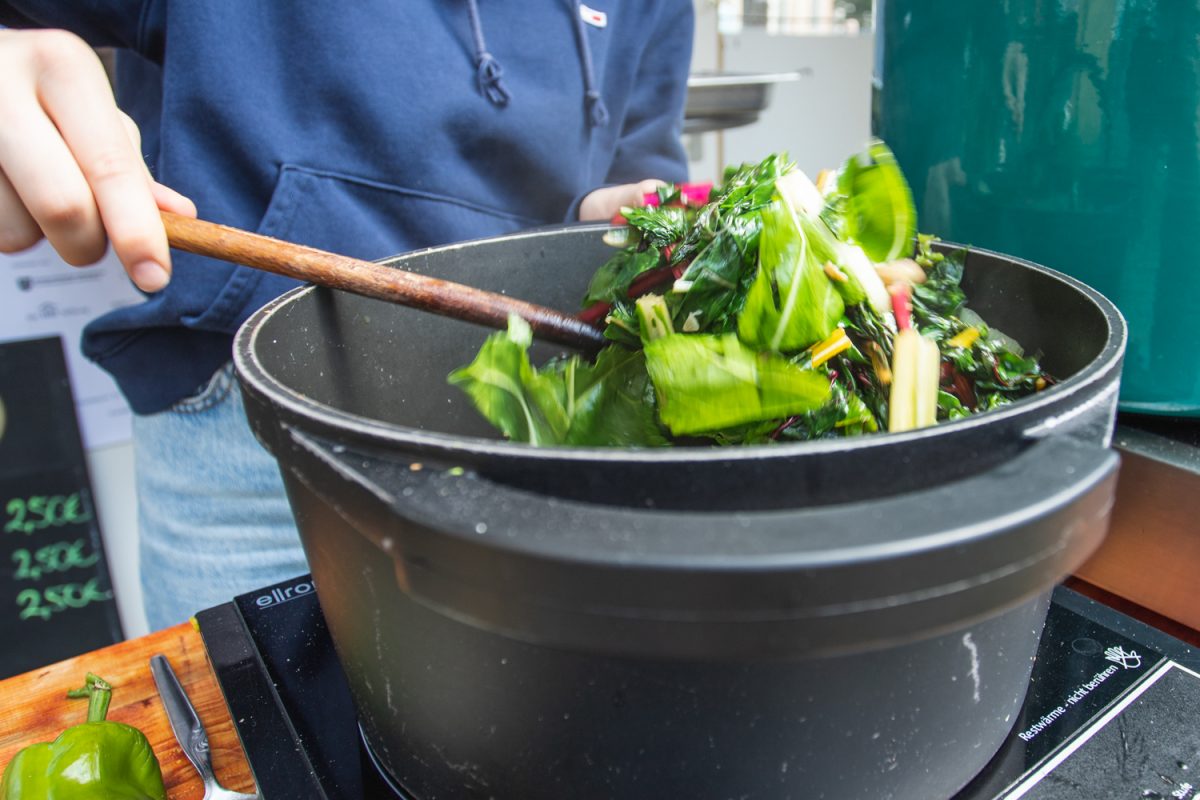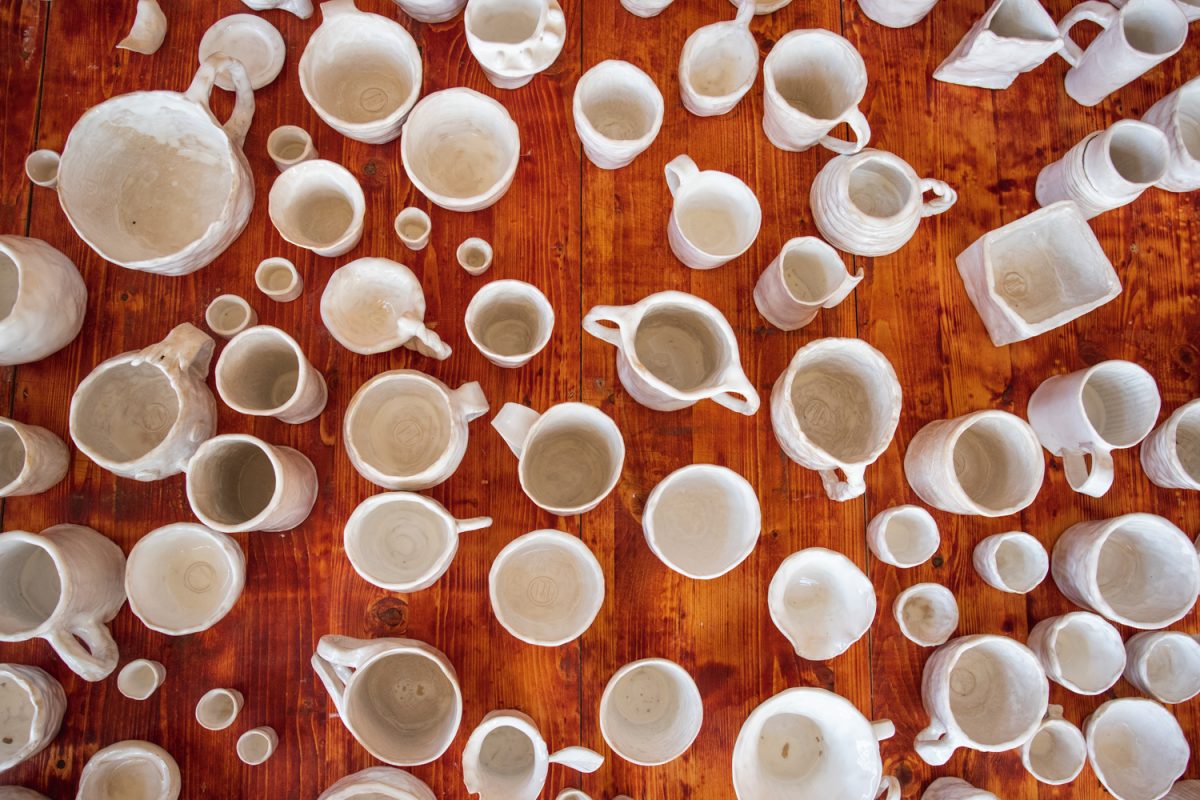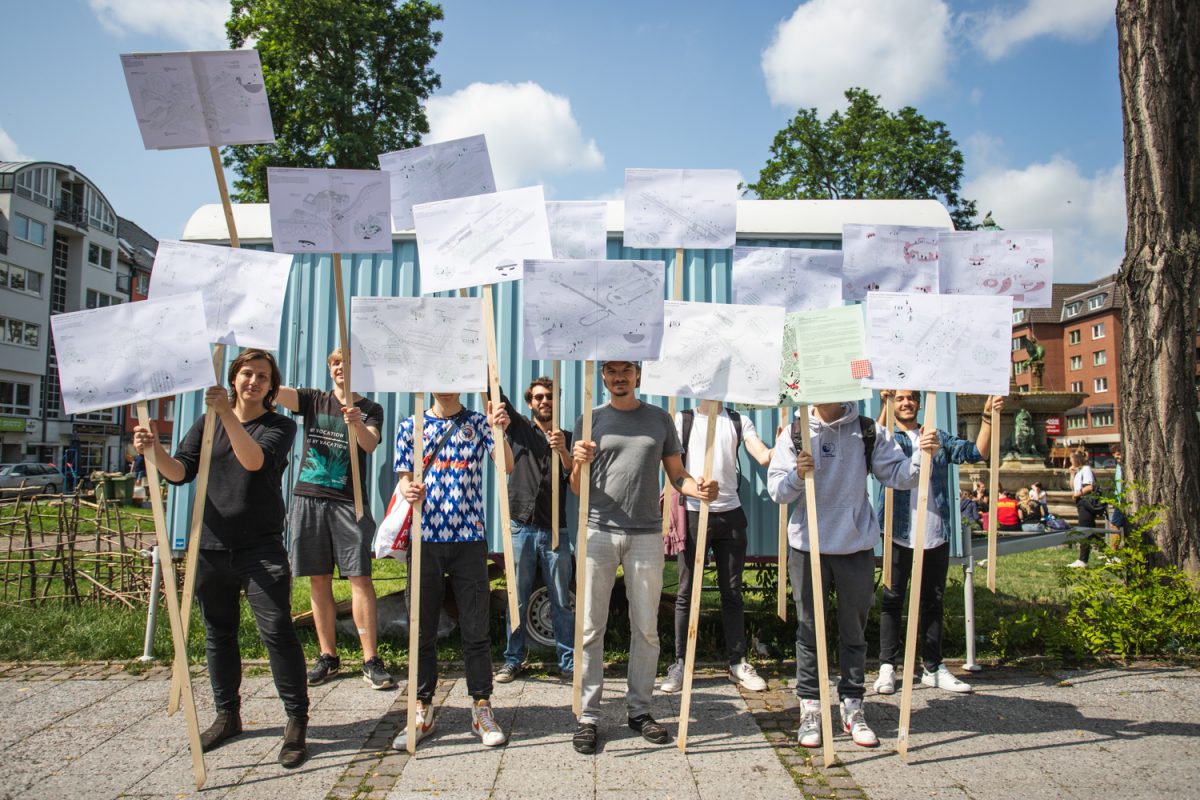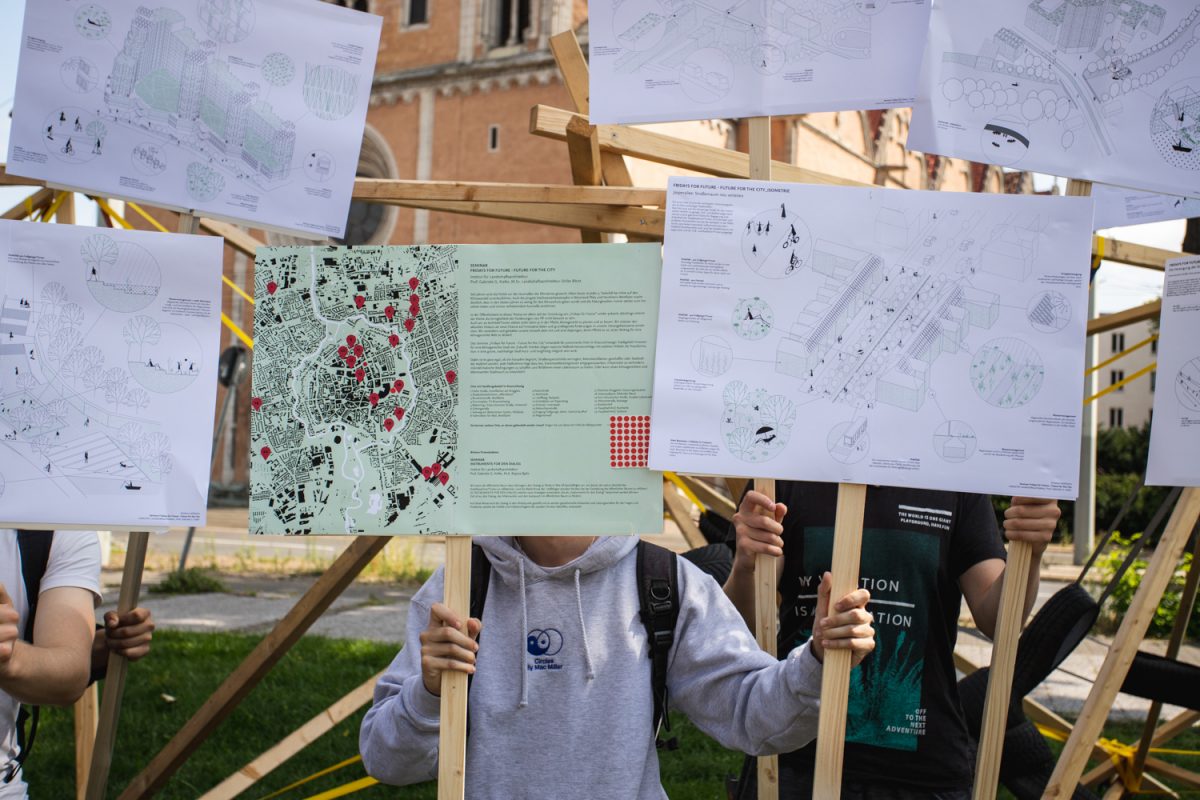In the city: the university meets the people End of semester at the living laboratory Hagenmarkt
The smell of delicious food wafts over Braunschweig’s Hagenmarkt. At several tables, students are chopping leeks, carrots, courgettes and potatoes. Vegetable soup is simmering in a large pot in the wooden pavilion; freshly picked chard is stewing in another. Harvest day at the living laboratory Hagenmarkt! At the end of the lecture period, the students of the Institute for Architecture-Related Art came together to pick the ripe vegetables and present work from the past academic year as part of the traditional architectural exhibition.
The square in the city centre is bustling. Passers-by mingle with the students, ask questions about the living lab, and buy coffee and pastries in the pavilion. Volunteers offer to help water the plants, someone brings a bucket of horse manure to fertilise the vegetables. The living lab has become part of the city.
“Hagenmarkt has changed a lot over the past few weeks,” says Professor Folke Köbberling, head of the Institute for Architecture-Related Art (IAK), which organised the living laboratory together with the Institute for Building Climatology and Energy of Architecture (IBEA) and the Institute of History and Theory of Architecture and the City (GTAS). More people are out and about in the square, they say, sitting on the furniture built by the students from shuttering panels, wooden slats and tension straps. The three-week programme curated by GTAS with workshops, walks and lectures was also well attended. “TU Braunschweig has made its presence felt in the city,” says Folke Köbberling. “Now we would be very happy if the residents would also accept the living laboratory during the lecture-free period and support us.
At a first meeting with potential partners from the university and the city, the project team set up a watering schedule so that the plants will continue to grow and flourish in the coming weeks. As a cooperation partner, Sandkasten wants to initiate new projects. The parish of St. Katharinen, the Haus der Kulturen, Transition Town, members of the reka association and Alfons Markiewicz from the pastry shop at Hagenmarkt also want to get involved.
Visions of a climate-friendly city
In the meantime, the soup and chard are ready. The students are partly spooning their meal out of cups they made themselves. The clay cups are both drinking and eating vessels, but can also be used as tools, explains Bernd Schulz, artistic and research associate at the IAK. With the cups, the students have taken up the semester’s overarching theme of “less is more”. “The cup is the vessel we need most,” says Bernd Schulz.
In addition to the IAK, Professor Gabriele Kiefer’s Institute of Landscape Architecture (ILA) provides insights into the students’ projects during the Department of Architecture’s exhibition “Rundgang 21”. In the seminar “Fridays for Future – Future for the City”, they have developed visions of a climate-friendly city of the future for prominent locations in the Braunschweig urban area. Here, the students show explicit proposals on “protest posters”, suggesting the means by which the transformation into a green city will be possible in the short and long term. They see a need for action, for example, at the main railway station, at the bus terminal, around the building of the former Galeria Kaufhof, but also at the student residence “Affenfelsen” and at the central campus.
Discussion about the square
With the living laboratory, the three architecture institutes have transformed the Hagenmarkt into a space of possibility, a place of experimentation. A space that is used and filled anew again and again. “The living lab is a nice enhancement of the Hagenmarkt and opens up a new perspective on the square,” says Alfons Markiewicz, who runs a pastry shop on the Hagenmarkt and offers coffee and pastries at a small stand in the pavilion. “It’s great how the students got involved and were able to try things out.”
Professor Elisabeth Endres, head of the IBEA, is certain that the architecture students were excited to get hands-on in the living laboratory. “On site, they are also asked to talk to residents about what they are doing in the living laboratory.” This is not the only reason why the discussion, exhibition and teaching venue is accepted by the people of Braunschweig. “The transfer of the university into the city has worked very well. People are discussing the square.”
The university would like to make the institutes visible in other places in the city. Folke Köbberling can imagine setting up the oversized seating furniture in other places. And they are also to be placed in Chemnitz: The flexible seating will be set up as part of the Capital of Culture, to which the artist has been invited.















